Media | Articles
How Chevy’s Retro-Wild SSR Came to Be
In all our many years of attending Michigan State University home football games, we have never seen such a reaction to any vehicle in our (or any) stadium parking lot. Not even to the borrowed Rolls-Royce press car with which we once tailgated some years earlier. Our reserved spot was close to the stadium at an intersection of two heavily traveled walkways, so a lot of folks passed by before the game. And a truly surprising number—from youthful students and cheerleaders to old-fart alums—stopped and gawked and asked about our unique, eye-popping vehicle. Was it a Ferrari, a Lamborghini, an Aston Martin, a Bentley GT? Something even more exotic? Nope. It was a shiny black early-production Chevy SSR.
My wife, Jill, was communications director for GM Product Development at the time (when Bob Lutz was running that group), and her boss had offered her the SSR for the weekend. It was a few weeks before that retro-rod convertible truck had hit Chevy dealerships, so almost no one had seen one even though they were being built just down the road in the same Lansing Craft Center that had assembled GM’s EV1 electric car and Buick’s Reatta two-seater.
I had just finished an Automobile Quarterly book (SSR – An American Original) on that custom-look truck so had interviewed and learned about it from everyone who had worked on it. And I spent virtually all my pre-game time talking about it and answering questions. Why did it look like a chopped and channeled 1950s pickup? What was under its low, sweeping, retro-truck hood? How did it drive? How did its unique retractable hard top work? I fielded a bunch more, including from some players and coaches, after the game, too.
How It Happened
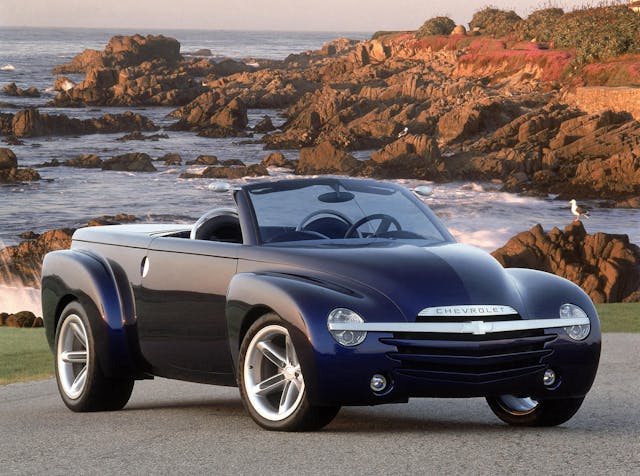
The SSR (Super Sport Roadster) was born as one of a dozen concept vehicles (including three from Chevrolet, one from Germany’s Opel, a soon-to-come Hummer H2 and the 80-mpg Precept prototype from GM Advanced Technology Vehicles) displayed at the 2000 Detroit North American International Auto Show. All 12 looked good, some great, but the SSR stood out. Hunched low on aggressive five-spoke alloys wearing fat performance tires under wildly flared fenders and powered by a high-performance 6.0-liter V-8, it looked sleek and muscular and promised driving dynamics more sportscar than truck. Everyone loved it.
This idea had been in then-GM Design VP Wayne Cherry’s head for a while. “My vision was to create a modern interpretation of the early 1950s classic pickup that has become the quintessential choice for street-rod custom trucks,” he wrote for the Foreward of my AQ SSR book. “I believed there was an opportunity to build upon that legacy in a new way.”
Marketplace
Buy and sell classics with confidence
Cherry had set up a special SpeedVision studio, GM’s first to use computers instead of drawing boards to develop new designs, then evolved it into a Corporate Brand Center (CBC) under then-executive designer Ed Welburn. “It was May 31, 1999 when Wayne invited me to sit between him and Ed to hear his ideas,” recalled Brian Baker, who was managing that CBC studio at the time. “As was my practice, I sketched during the discussion and showed my first impression to them as the meeting ended. They gave us the green light to start sketching.”
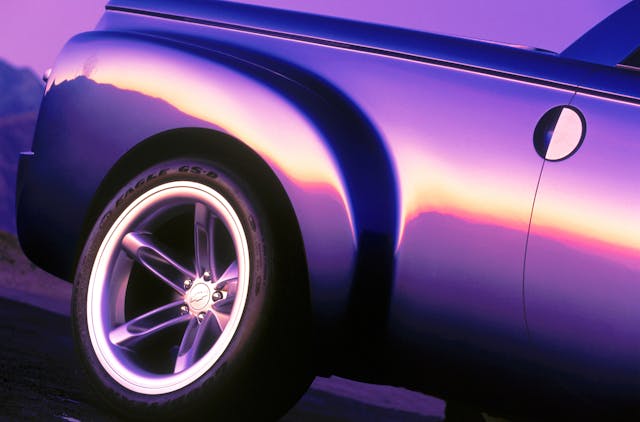


Moving very quickly, the studio developed multiple themes—both “slammed” and lowered, and sitting up high like an early ‘50s truck. A lowered “slammer” design with large, flared fenders became the top candidate. “We had no clay models in this studio,” Baker related. “We relied on digital math models, projected them on a massive screen in our Virtual Reality Room, and viewed them through 3-D goggles. And we brought in ASC, and later Karmann from Germany, to figure out a two-piece retractable hard top that would not take up cargo space.”
When they earned approval to build full-size foam models, no shop in the Detroit area had capacity to make them due to other work for the 2000 Detroit Show, so they contracted Metalcrafters in California. “Glen Durmisevich smoothed Dave Schick’s digital surfaces for a terrific-looking model,” Baker continued. “Huge chrome tailpipes and high-mounted ‘hot rod’ mirrors completed the ‘California billet’ look.” They envisioned the production SSR on a low-riding Cadillac sedan chassis, but it would end up taller and 10 percent bigger than the concept on a shortened three-row Trailblazer SUV frame. “Still, Bill Davis and Glen Durmisevich did a great job of keeping the religion of the concept as they productionized it.”
When they pulled the cover off their “slammer” model In a September GM North American Strategy Board (NASB) new-product review, that group was stunned. “This was the top leadership of the company,” Welburn related, “and they were very excited. We had a monitor setup with a simple animation. It rotated, then the top went down, and that really got them going. They asked, ‘Can we do this for the Detroit Show?’” Cherry and Welburn exchanged looks. They had not engineered it at all nor even thought about building it for Detroit. “Sure,” Cherry said. “Yes… we can.” The program had moved from initial sketches to two full-size foam models in an incredible seven weeks, all done in a totally digital environment. Now they had just three months to build a running concept vehicle with a working retractable hardtop.

Technical Staffs and Truck Engineering group executive Tom Davis (no relation to designer Bill) and then-Chevrolet general manager Kurt Ritter put together a team that worked long and hard to find a way to get it done. “We told Engineering to get with Design Staff and figure out how we could do this on an existing chassis and Manufacturing to figure out how we could build it somewhere in the company,” Tom Davis recalled. “This was going to be a home run. The issue was how can we do it at a cost and a price level that makes sense.”
Designers Bill Davis and Glenn Durmisevich worked with the Portfolio Development Center (PDC) on the production design using as many existing “carryover” parts as possible. While the concept had been quickly built on an S-10 compact pickup platform, the production proposal was to be built on the soon-to-come GMT 360/370 Chevy Trailblazer midsize SUV architecture that would provide room and structure for a V-8 engine and a 25-gallon gas tank. The standard Trailblazer platform’s wheelbase was too short to achieve the right proportions, so they put it on the longer three-row chassis cut down to just the right length.
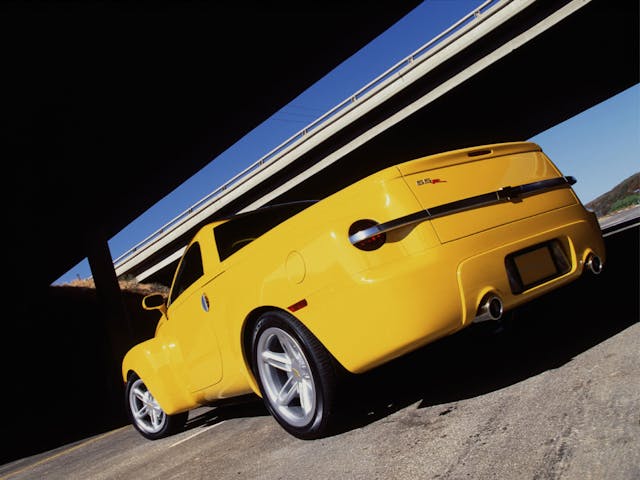

On August 9, 2000, just seven months after the SSR concept truck had wowed everyone at the January Detroit Show, then-GM CEO Rick Wagoner announced at the Traverse City, MI Center for Automotive Research (CAR) Management Briefing Seminars that GM would build the SSR beginning in late 2002. Then he and Ritter proudly paraded the purple/blue concept SSR in the August Woodward Dream Cruise—the annual auto extravaganza that lines suburban Detroit’s famous Woodward Ave. with thousands of enthusiasts ogling a mind-blowing variety of collector cars and trucks cruising by.
Then, on Sept 5, NASB reviewed the results of a 14-week production study and approved the continuation of the program and selection of ASC as the primary outside partner. But developing the production design on the GMT 360/370 midsize SUV platform was a major challenge. To meet crash requirements with some 70 percent carryover parts content, it had grown longer, wider and taller and had lost the concept’s pleasing proportions. Everyone soon realized that this modified design wasn’t working, and some say it nearly killed the program.
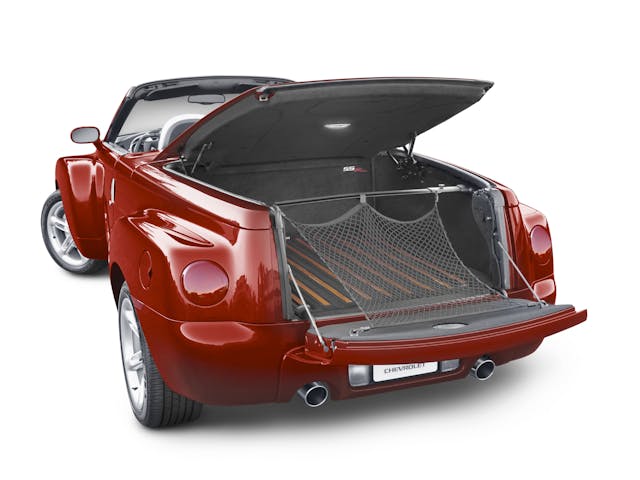
So, working in a small ASC studio across from GM’s Warren, MI Tech Center, the combined GM/ASC team embarked on a different approach. “We still started with the 360/370 chassis,” ASC Creative Services president Mark Trostle said, “but took it to another level with a new floor pan, a new cowl, and all-new sheet metal. And we had to stretch the front overhang about four inches to work around the chassis components and for crashworthiness.”
The build team worked with Visioneering Technologies on the retractable hardtop design, which was demonstrated and approved on October 15. Operating through two separate mechanisms, it folded, retracted, and stored vertically between the cabin and the bed, exactly like the animation that had so excited the NASB. And when Wagoner drove a yellow production-intent version in the 2001 Woodward Cruise, a spectator yelled to him, “It’s a great truck, but you’ll never build it!” “Oh, yes, we will,” he yelled back. “You just wait.”
In January 2001, then-GM Manufacturing VP Gary Cowger announced that the SSR would be built in the small, specialized Craft Centre plant in Lansing, MI because of that facility’s “proven history of producing high-quality, low-volume niche vehicles such as the Buick Reatta, EV1 and Cadillac Eldorado.” Among the many challenges was the widely flared steel fenders, which required a specially developed stamping process to achieve a huge 18 inches of “draw” for the fronts and 10 inches for the rears. The first salable SSR rolled out on July 29, 2003.
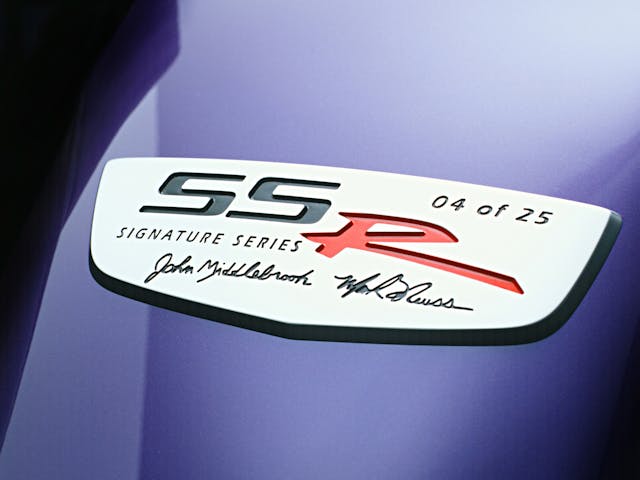
One interesting sidebar was the 25 early special-build Ultra-Violet “Signature Series” SSRs (VINs #0001-0025) that were autographed by GM executives, designers, engineers, and builders then sent through a series of events and celebrities to build collector desirability and value, then sent to auction with autographs, photos, news clippings and other memorabilia documenting their unique journeys in special scrapbooks inside metal pedigree boxes. Another was the specially prepared SSR that paced the 87th Indianapolis 500 on May 25th, 2003, preceded by a media reveal of all 25 Signature Series SSRs when reporters enjoyed the opportunity to cruise them around the Indianapolis track with Indycar drivers riding shotgun.
Our SSR
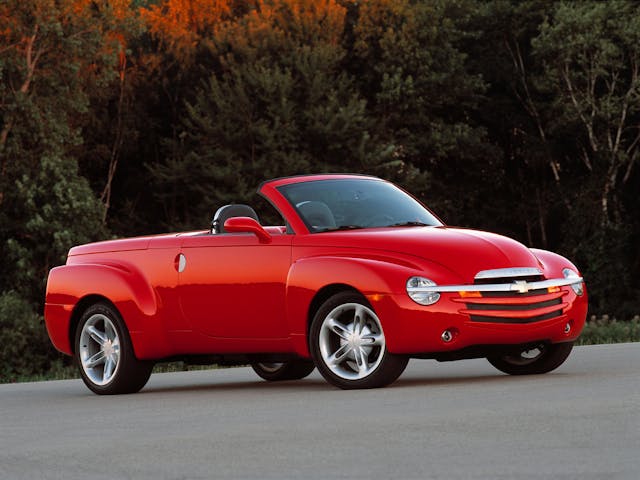
After that MSU tailgating experience, Jill suggested that we really should have an SSR, and I eventually agreed. We had no time, budget, or energy for old cars at the time, but how about a very cool new one covered by its full GM warranty? I had enjoyed two media track test opportunities in SSRs and had found them surprisingly athletic and fun to drive despite their size and weight, largely due to excellent chassis tuning by the very capable dynamics development engineers and partly to massive traction from their huge wheels and tires.
We applied for a “Captive Fleet” SSR that had served as some lead engineer’s or executive’s company vehicle for several thousand miles. That program put sufficient numbers of early-build new vehicles out in daily usage to catch and fix any last-minute glitches before they began being shipped to dealers. They were then offered to employees and retirees (using a lottery system if there was more demand than supply) at friendly used-car prices. We got a red one.
My memories of driving that bright red SSR, especially with its top down, are all good. It did ride and handle surprisingly well, and I loved the sound of its low-restriction dual exhausts, both when idling and under power. It also had plenty of performance for casual cruising (~7.7 sec. 0-60 mph), though the media bashed it for packing the standard 300-horse 5.3-liter SUV V-8 and automatic transmission (because that powertrain was emissions-certified) instead of the 2000 concept’s much more powerful 6.0-liter Corvette-derived engine.
We enjoyed ours as a big, head-turning, two-seat roadster with a giant covered trunk. I fondly recall cruising it home from a media event at the Automotive Heritage Museum in Ypsilanti, Michigan one warm summer evening. Jill had just picked up the Captured-Fleet 2006 Pontiac Solstice we had ordered and had driven it there to join me for dinner. With the SSR’s top down and those lovely exhausts burbling happily at freeway speed, I watched our new Solstice in my mirrors and thought these were two of the coolest-looking cars on the road, both new, factory-warranted and potentially trouble-free, not old and potentially needy.
Two model years too late, the SSR did get substantially quicker for 2005 with the C6 Corvette’s 6.0-liter LS2 V8 (with 390 hp in this guise) and offered an optional six-speed manual transmission for the first time. Performance with the manual improved dramatically, to an advertised 5.29-second 0–60. It got five more ponies for 2006…then was abruptly canceled due to weak sales.
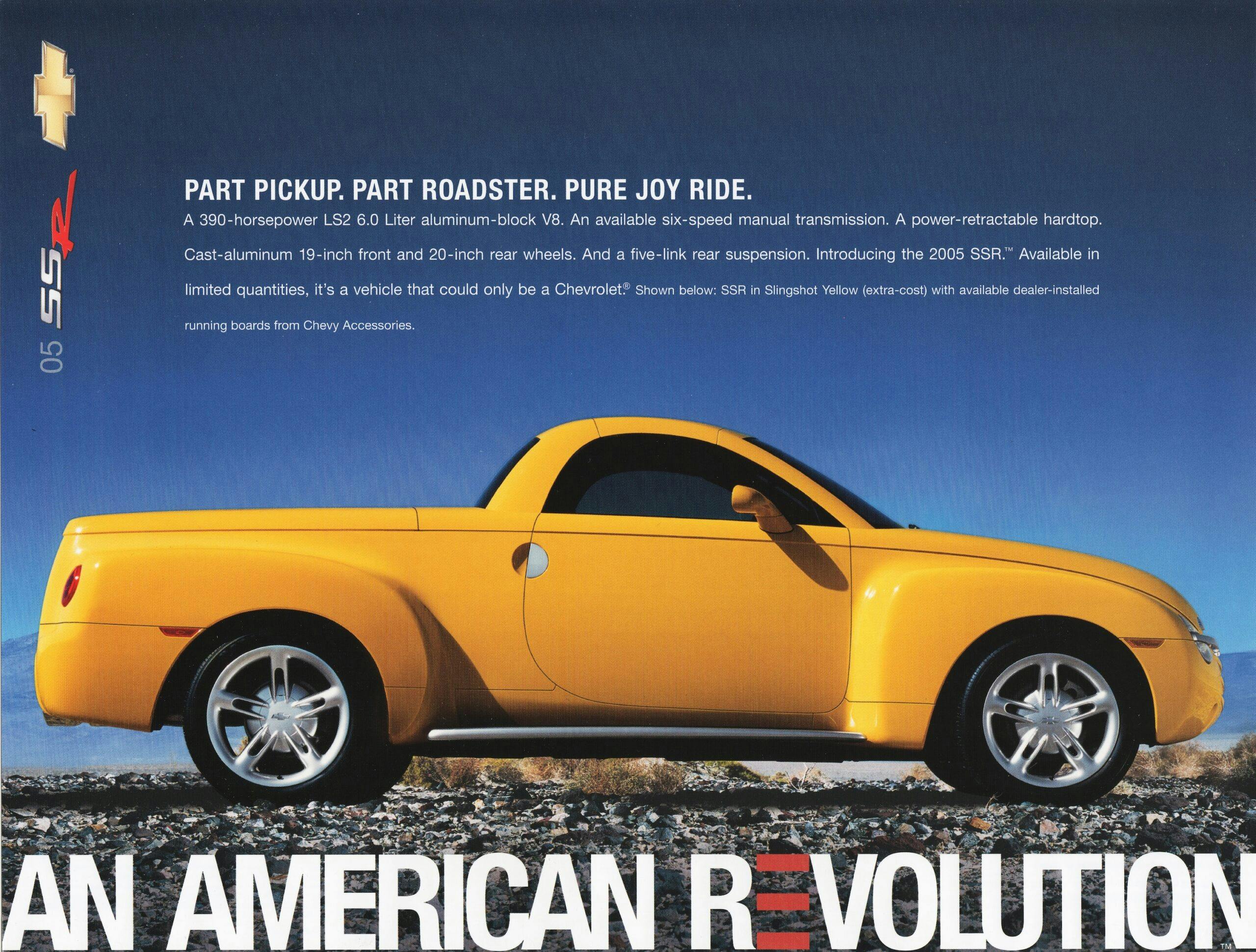
Reports vary on how many SSRs were built and sold between its mid-2003 launch and its mid-2006 cancelation, but this hot-looking retro pickup proved a sales disappointment. According to carsalesbase.com, just 1,664 were sold in calendar year 2003, 9,648 in 2004, 8,107 in 2005, 3,803 in 2006, 244 (remaining 2006 models) in 2007 and the last 13 in 2008. That adds up to 23,479, though other sources contend that total production was 24,150, of which 24,112 were available to the public. Counting those 25 Signature Series trucks, make that 24,137.
Why did this super-cool pickup fail in the market? On the positive side, its sexy retro-rod looks, rumbling exhaust, and surprisingly athletic handling made it a smile-inducing cruiser, especially top-down. But it was too big, too heavy, and too pricey at more than $42,000. It also wasn’t as quick as most expected it to be, at least in its first two model years, due to the GM truck V-8 and four-speed automatic transmission it initially inherited from its Trailblazer SUV cousin.
After acquiring our 2006 Solstice, our ‘03 SSR had to go, eventually to a friend of a friend in Arizona who had previously owned one, then sold it, then wished he hadn’t. Looking back, the SSR still looks great, it was fun to drive, and its rarity predicts good collector value.


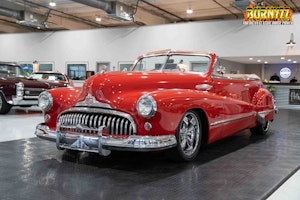



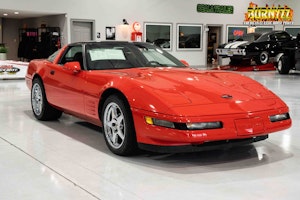
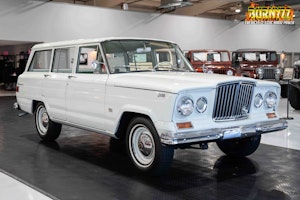



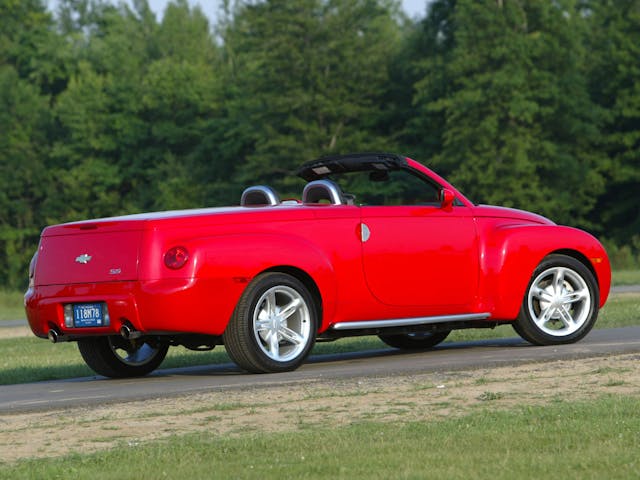













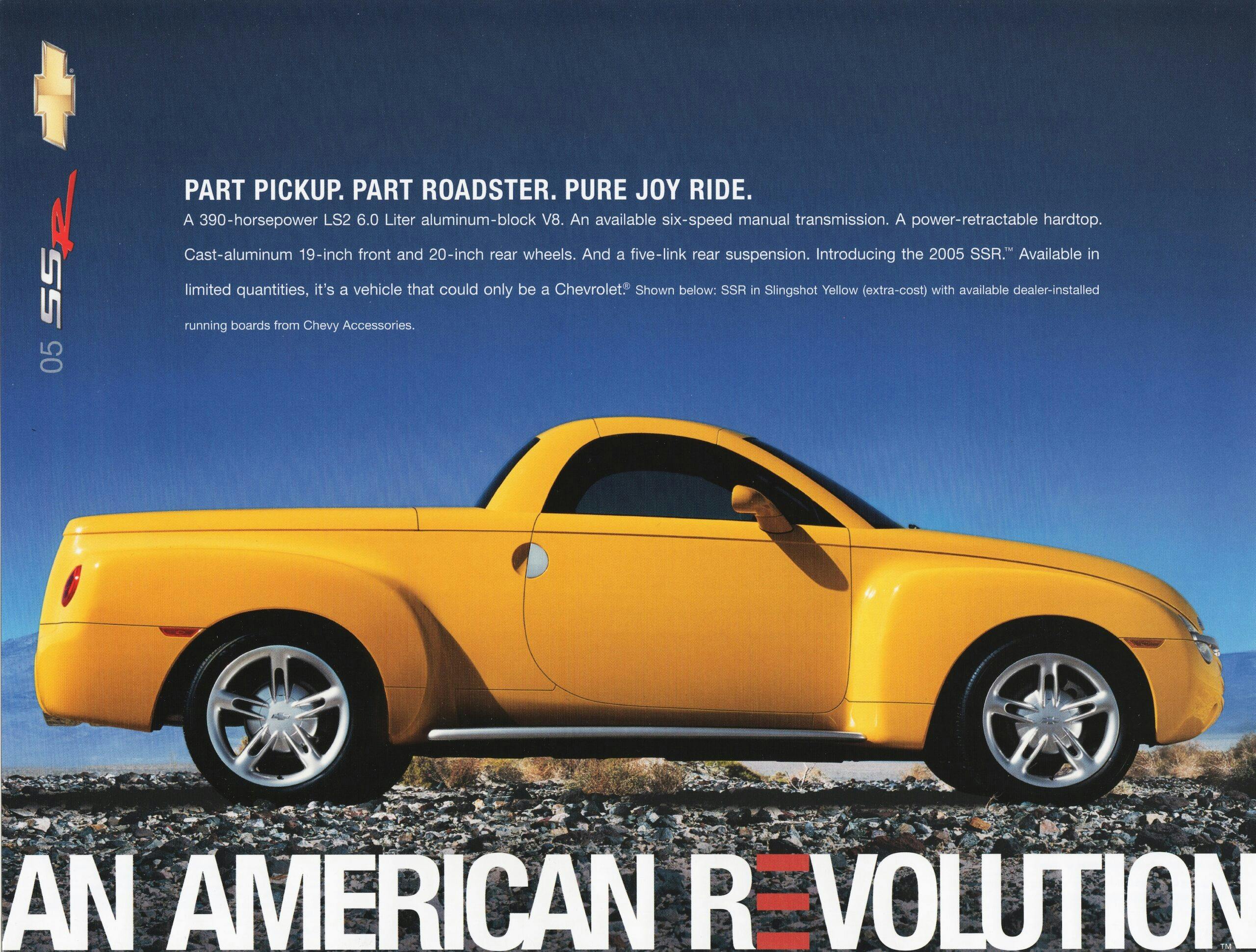

I really enjoyed this read. And the comments. I had just turned 21 when the SSR came out. I loved it. However I did always seem to be in the minority for liking it. I also had a growing family, so it was a totally impractical vehicle for me. I did however have the opportunity to work on a few and drive them throughout the years as a technician at a Chevy dealer. The 6.0L versions were definitely more fun to drive than the 5.3’s. Haven’t seen one in our shop for a couple years now.
I have a 2003, Slingshot Yellow one. I did not got out to look for this vehicle as I have a couple of specialty vehicles now and I do not have the space to garage yet another vehicle. It was parked in my neighbors driveway for nearly two years and I drove by the vehicle everyday, seeing it as I passed by to get to my home. The yellow is a striking color and it stood out catching my eye each and every time I drove by it. I have had many yellow vehicles, ’33 Ford three-window coupe street rod, ’54 Ford F-100 Panel Delivery, ’71 Duster 340 and a PT Cruiser Rt. 66 Version. I have a ’73 Corvette that is supposed to be yellow and will be one day.
I made an offer for the SSR and the original owner accepted it. It has been an arduous task bringing the SSR back to life with many things yet to do. I wish that GM did not “cheese out” with cheap plastics used in the interior and many issues are still problematic. Being a member the the website SSR Fanatic has been a help and reassuring in repair solutions, spare parts (which are hard to get) and knowledge of the vehicle. I have gotten stuck on the side of the road at least twice with the vehicle but, that has been true for other older vehicles I have owned. I am still in love with this car however because it is a “stand-out” eye catcher. I get more inquiries on this vehicle more than any other I have owned. Is it a problematic vehicle? Yes, I would say yes but, when you drive one down the road, you feel like you have something no one else has, you are one of a kind.
I, too, enjoyed the well written article as well as the comments. I own too many of these sweet trucks. (5) They are a beauty and special to each individual owner. They indeed draw a lot of looks and comments. The cool thing to me is they each have their own story. I searched for the collector trucks. A silver/Pac Blue, a Blur/silver, an 03 Flame Pace truck etc. The love of the search and the uniqueness of the truck is my attraction.
The SSR Fanatic site is the best anywhere. A great group of people who admire their trucks. I am Agcat from the Land of Oz.
As an 83 year old man living in a small rural town in western N.C. I believe I recently paid the highest price for a low low milage 2004 SSR (2,800) black/black with ever option ( according to Hagerty’s list)… I would have paid more. I drive this truck every were and the interior fits like a glove, now it has 3,400 miles, the smaller corvette engine responses’ will and also fits my foot…I was in our Christmas parade and how lot’s of folks wave at me…got that great sound of an 04 Corvette Regards Bill
A good friend of mine had a yellow SSR with all the options. It was a later one with the big motor and the 6 speed stick.
I thought that it was one of the coolest things ever produced by GM.
I parked one when working as a valet and i remember liking the interior a lot. It was simple and to a point just how i like it.
Not all driver’s were older, as one evening i ran into a testosterone fueled 20-something in a black SSR and I gave him a run in my SRT4 which hurt his ego even more. That was 20 years ago. Hy $hit time flies.
Whatta ya mean old guys, I was only 51 when I bought my El Camino convertible I always wanted.
20 years later it’s still my daily driver, but I admit it’s a hassle for a curmudgeon to be accosted by people, mostly women, who want to know all about it and take selfies with it.
But… sigh, we all have our crosses to bear.
Excellent article, have to make a copy of it, thank you.